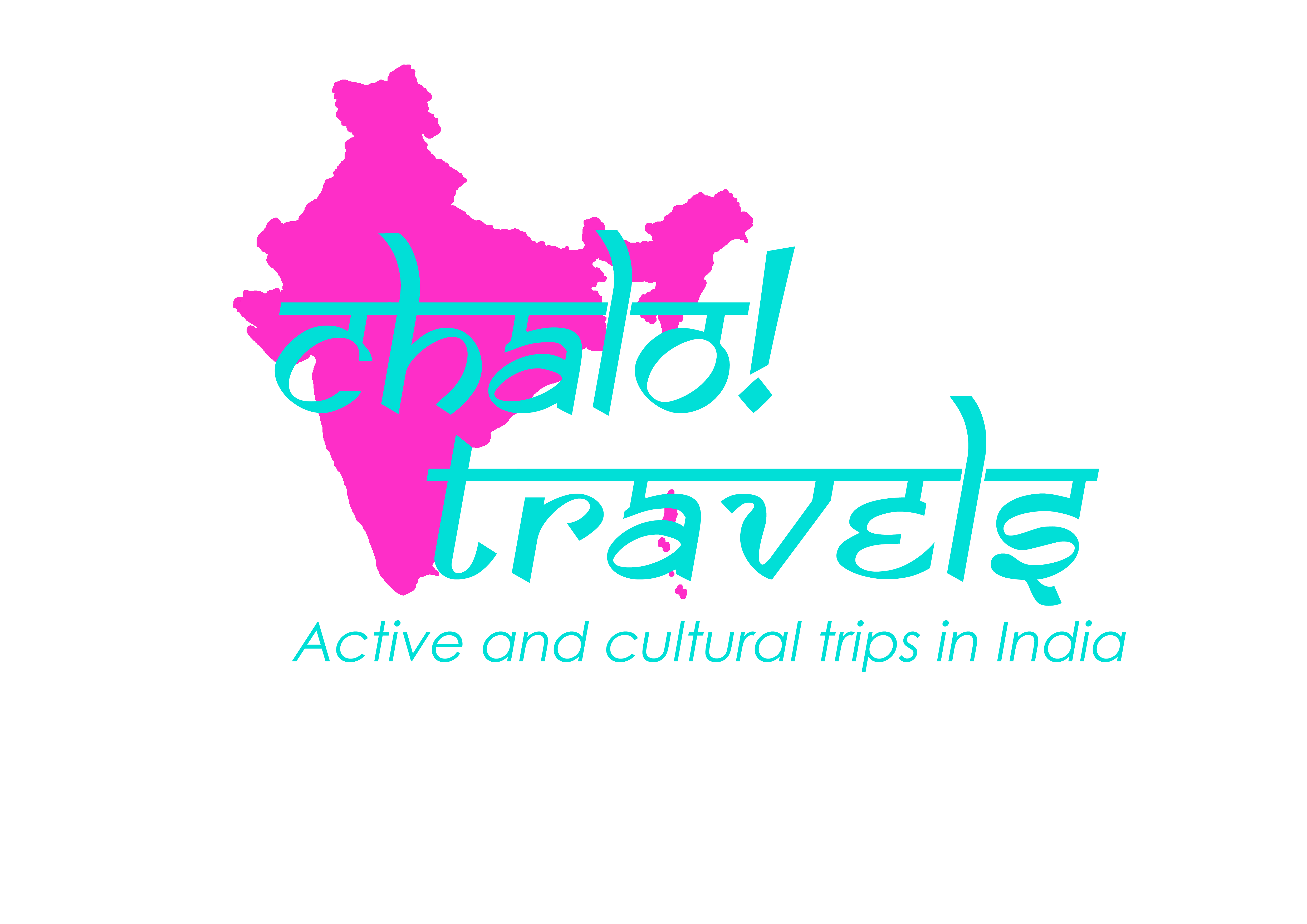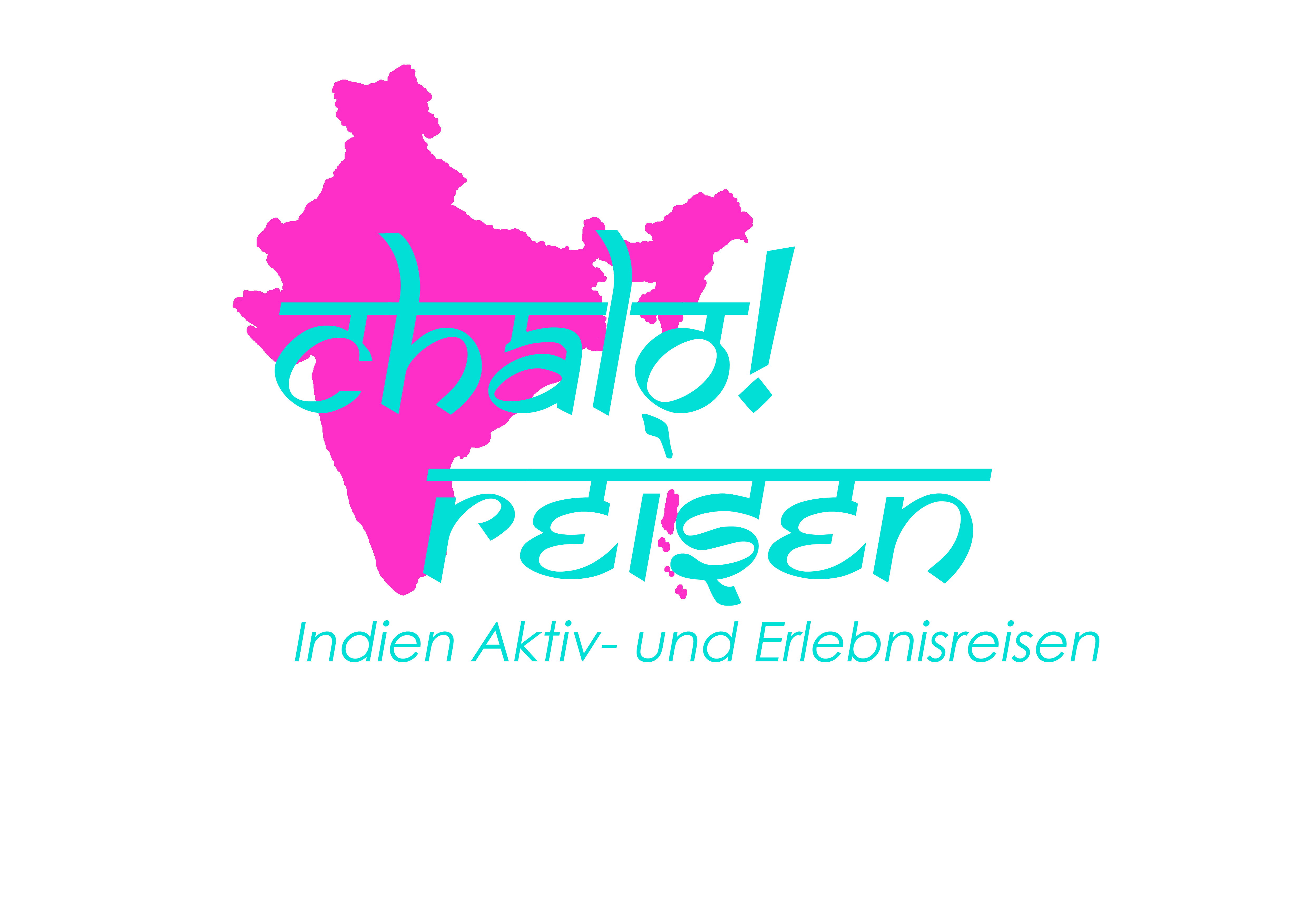- Sport & Abenteuer Reisen
- Aktive Kultur Reisen
- Kultur Reisen
- Trekking Reisen
Overview
A journey through West Bengal and Sikkim
The 18-day round trip through the northeastern part of India begins in Calcutta. From here we will drive south into the mangrove forests of the Sunderbans to see the Bengal tiger here during a boat tour in the river delta. Then it goes up to the north to Sikkim. In addition to visiting Buddhist monasteries, the highlight here is the seven-day trek in the Kachenjunga National Park. It goes up to 5000 meters to the Goechala Pass and we can enjoy spectacular views of the surrounding Himalaya. Of course, the view of the eight-thousand-metre Kachenjunga is something very special.
At the end of our trip we will visit the tea region around the mountain station Darjeeling and take a ride with the ancient Toytrain.
Program
Day 1 Arrival in Calcutta
You will be picked up from the airport in Calcutta and taken to the hotel. During a dinner together we will discuss the tour in detail. Overnight: Hotel (-/-/D)
Day 2 Calcutta Sightseeing
Today we will take a guided sightseeing tour through the former capital of the British. The seventh largest city in India is an industrial and cultural center and famous for the Khalighat Temple – a temple dedicated to the goddess Khali. We will visit the temple and Mother Theresa’s House, taste the famous Bengali dessert Gulab Jamun, stroll through the alleys of the old town and through large flower market. Overnight: Hotel (B/-/-)
Day 3 Excursion to the Sunderbans
The Sunderbans (translated as “Beautiful Forest”) are the largest mangrove forests on earth. The sprawling estuary of Brahmaputra, Ganges and Meghna is difficult to access and offers a unique ecosystem. This is where the rare Bengal tiger is at home.
We will start early in the morning by car to Godkhali and then by ferry to the island of Gosaba. Here is a market for the approximately one hundred surrounding villages. Our Eco village is located on another island. After lunch we will take a walk through the rice fields and villages of fishermen and honey collectors and get an intensive insight into the culture of the people. There are no cars or electricity here, which makes this place very special.
In the afternoon we will take a small boat tour on the rivers through the Mangrove forests. In addition to the most diverse birds, such as eagles, cormorants and the king fisherman, we will also spot rare crabs and fish.
After sunset we will return to our Eco-village. After a dinner and a small cultural music program you can either sleep in one of the small village cottages with solar energy or on our houseboats. Overnight: Eco-Village (B/L/D)
Day 4 Safari through the Sunderbans by boat
We start early in the morning and will spend the whole day on the boat safari through the mangrove forests until sunset. We will climb on three lookout towers and try to spot the crocodiles, dolphins, deer, wild boars and of course the famous Bengal Tiger. On the boat we are served breakfast and lunch, as well as refreshments. After sunset we will drive back to Calcutta and arrive at our hotel in the evening. Overnight: Hotel (B/L/-)
Day 5 Flight to Bagdogra- Gangtok. Distance 125 km/ 4 hours
We will fly to Bagdogra and from here we will continue to Gangtok in Sikkim. We check into our hotel in Gangtok. Overnight: Hotel (B/-/-)
Day 6 Gangtok
Today we will visit Gangtok. We drive to Rumtek Monastery, the most famous Buddhist monastery in Sikkim, and later visit the Tibetan Museum. The nearby Do-Drul Monument is the largest so-called Chorten in Sikkim. We can also visit the flower show to get to know the most diverse orchids and native plants of Sikkim. Then we visit the small but beautiful monastery of Enchy, which is located from a small hill above Gangtok. Overnight: Hotel (B/-/-)
Day 7 Gangtok- Yuksom Distance 120 km/ 5 hours
After breakfast we drive to Yuksom, the starting point of our trekking tour and ancient capital of Sikkim. It was here, in the small sleepy village, that the first king of Sikkim was crowned by three Lamas in 1641 to establish a kingdom in which the Nyingma practice would be protected. We will visit the small village with the Norbu Ghang Chorten and the Stone Throne (here the king was crowned). Overnight: Hotel (B/-/-)
Day 8 Yuksom- Bakhim
12 km/ 6-7 hours; maximum height – 2720 meters
Today our trek starts! A hard climb leads us through a beautiful vegetation with magnolias, rhododendron and orchids and over two streams. There are also brown and black bears. Near a stream we will stop for lunch. Bakkhim consists of a small forest house and a few huts with Tibetan flags. We pitch our tents a little above in the forest. Overnight: Tent (B/L/D)
Day 9 Bakhim- Phedang
6 km/ 3- 4 hours; maximum height – 3745 meters
After breakfast we will wander through a dense forest to the former village of Tsoka. In the past, Tibetan refugees used to live here from cheese production and vegetable cultivation. The authorities of the Natioanlpark relocated the people from the former beautiful village. Only an old monastery is preserved. We continue on a good path through Rhododendron forests. On the green pastures of Phedang we will build our camp. Here we have a spectacular view of the Himalayan mountains and will sleep at an altitude of 3745 meters to prepare for the next higher camps. Overnight: Tent (B/L/D)
Day 10 Phedang- Dzongri
5 km/ 3 hours; maximum height – 4050 meters
It goes steeply up to Deorali, one of the best viewpoints on the Kanchenjunga. From here it goes gently uphill and downhill to our camp in Dzongri. Here we will pause a little and then climb uphill for about an hour to the Dzongrila Pass (4417 m). From here we have a great view of the summits Rathong, Frey and Kang. From here we would continue towards Nepal, but we descend again to the camp.Overnight: Tent (B/L/D)
Day 11 Dzongri – Thangsing- Lamuni
12 km/6-7 hours; Maximum height 4200 meters
Early in the morning we will go to the Dzongri viewpoint around the beautiful view of the Kanchenjunga mountain range at dawn. So early in the morning it will be cold, but the effort is worth it: The view of the highest mountains at sunrise is unique! We will return to the camp, warm up with a hot cup of tea and then trek to Thangsing after breakfast.
It will be a leisurely hike with some descents. A little steeper down it goes to the Rangit River. We cross the river over a wooden bridge and then climb uphill through dense Rhododendron forest to the green Thangsing pasture. Overlooking the Pandim summit and other mountains, we will have our lunch and then hike for another two hours to our nearest campsite. Overnight: Tent (B/L/D)
Day 12 Lamuni- Goechala- Thangsing
14 km/ 7-8 hours; Maximum height 5000 meters
Today is a special day: it goes to our highest point of the trek, up to 5000 meters to the Goechala Pass. It is located at the foot of Kachenjunga. Throughout the ascent, we will have a spectacular view and the pass with its Tibetan flag blowing in the wind offers a very special experience. Later it goes back on the same way to Thangsing at 3900 m. Overnight: Tent (B/L/D)
Day 13 Thangsing- Choka
16 Km/ 6-7 hours; Maximum height 3050 meters
We continue the descend, experience the unique landscape from the other direction and this time we will spend the night in Choka. Overnight: Tent (B/L/D)
Day 14 Choka- Yuksom
14 km/ 06 hours; Maximum height – 1780 meters
Our last day of trekking with the end in Yuksom. Here a hotel room with a soft bed and a hot shower is waiting for us. Overnight: Hotel (B/L/D)
Day 15 Yuksom- Kechopalri- Pelling 60 km 3 hours drive
After breakfast we drive to Pelling and visit the holy lake Kechopalri on the way. This lake is sacred to both Hindus and Buddhists and is also known as “the lake of desires”. The story is told, that wishes made here at the lake come true. We reach Pelling, a tourist resort with beautiful views and visit the nearby Pemavangtse and Sangha Cholling monasteries. Two very special monasteries – one has a unique architecture, the other enchants with a great view. Overnight: Hotel (B/-/-)
Day 16 Pelling- Darjeeling 140 km 6 hours drive
Today we drive to Darjeeling. The former British “Hill Station” is known for its mountain views and tea. To the village of Tista we drive along a river, then it goes steeply uphill to Darjeeling through teak and salt forest and on through the tea plantations. Overnight: Hotel (B/-/-)
Day 17 Darjeeling (With the option to go to tiger mountain at sunrise)
We walk in the early morning to the “Observatory Mountain” . Here is the Mahakal Temple, where Hindu and Buddhist priests perform their rituals side by side. Later we take a one-hour drive with the so-called “Toytrain”. In the afternoon we visit a tea garden and the Tibetan Refugee Centre and can also visit the Mountaineering Institute. Overnight: Hotel (B/-/-)
Day 18 Darjeeling- Bagdogra 100 km /3.5 hours and connection flight to Calcutta, Delhi or home
It goes to the airport in Bagdogra. If you are not flying directly back home, we will be happy to help you with your further travel planning to Delhi or Calcutta! (B/-/-)
Services
- All accommodations in two-person rooms (extra charge for single rooms) with breakfast
- Complete transport
- English-speaking guide
- Flight Kolkata-Bagdogra
- Sightseeing in Calcutta
- Two-day trip to the Sunderbans with full catering and boat safari
- Seven-day trek to Goechala (complete camping equipment, mountain guide, cooking team, load horses/carrier) with full board
- Ride with the Toytrain
- Entrance fees/permits
International flight (return flight from Bagdogra)Unmentioned meals and drinksTipsVisa
Highlights
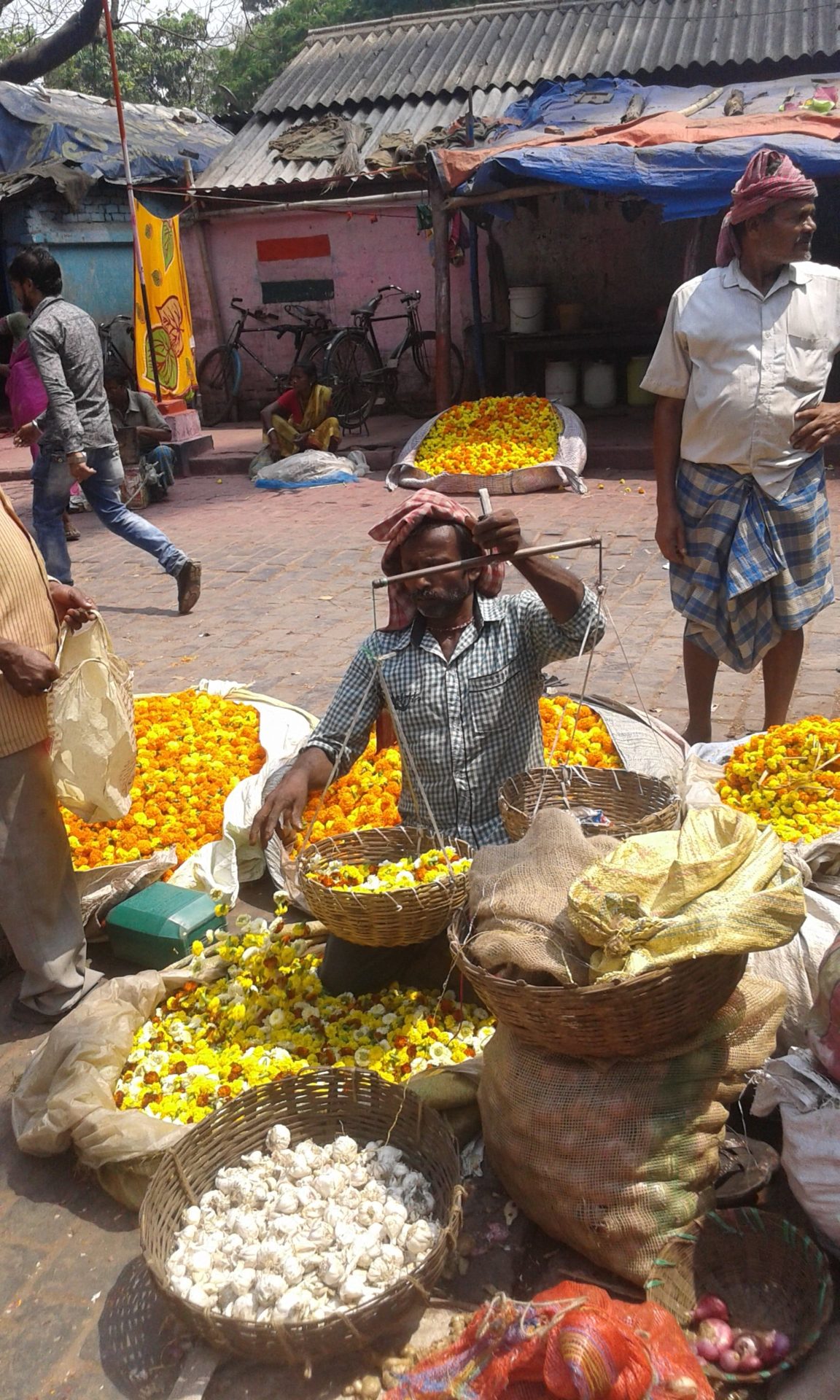
Flower market in Calcutta 
Calcutta 
Calcutta 
Calcutta 
Calcutta 
Sunderbans 
Sunderbans 
Sunderbans 
Village Sunderbans 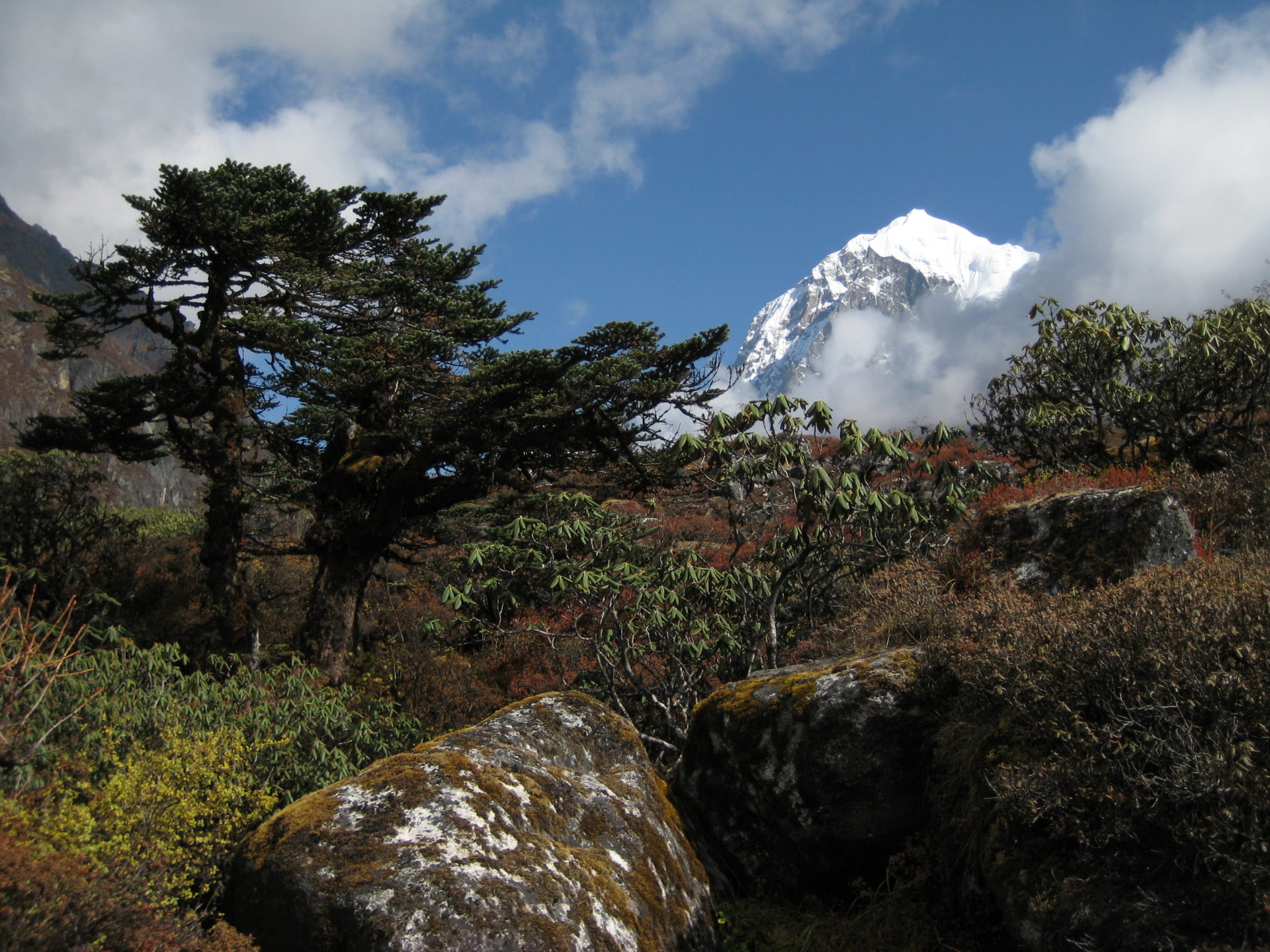
Sikkim Goechala Trek 
Sikkim 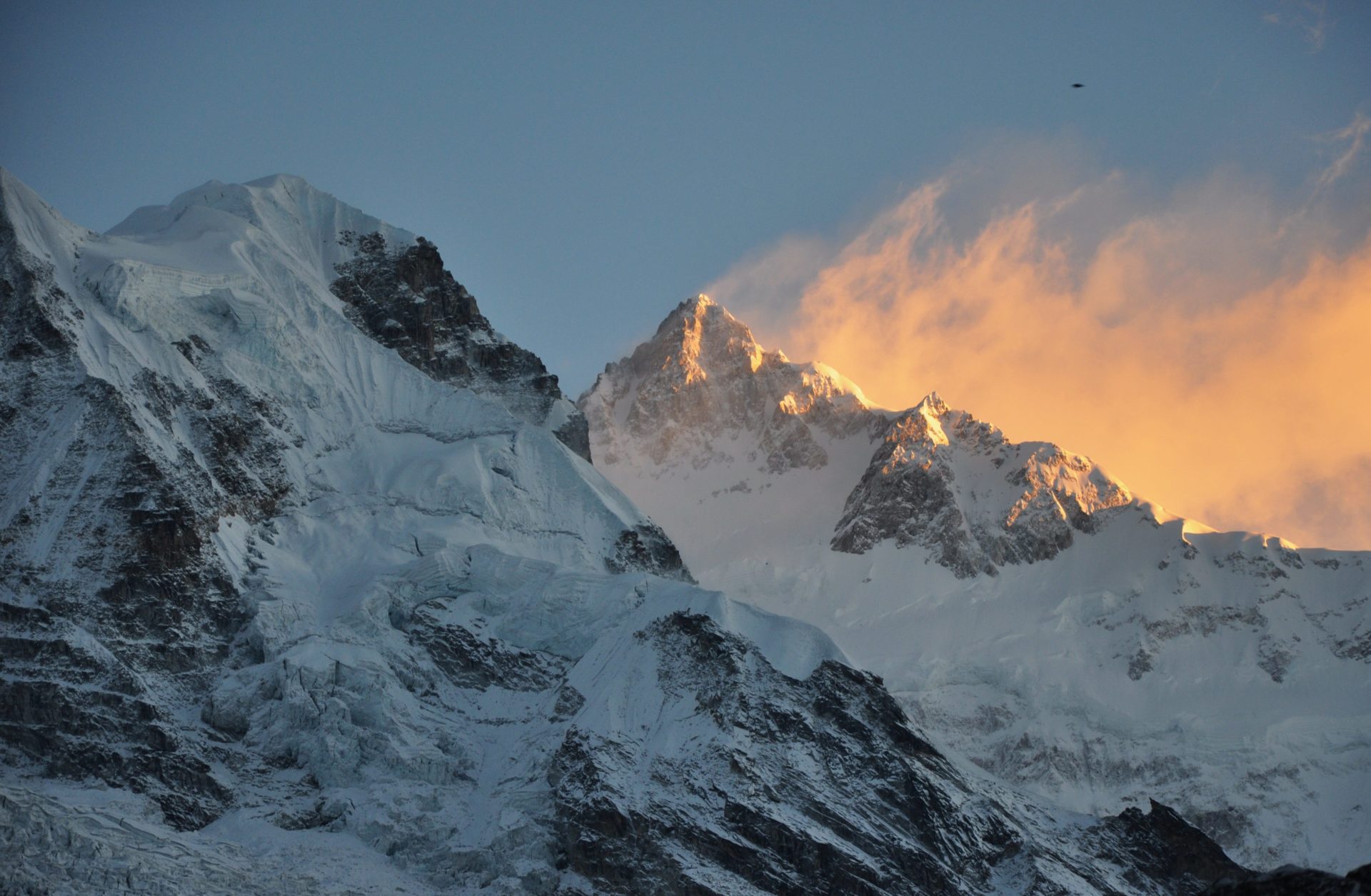
Sikkim 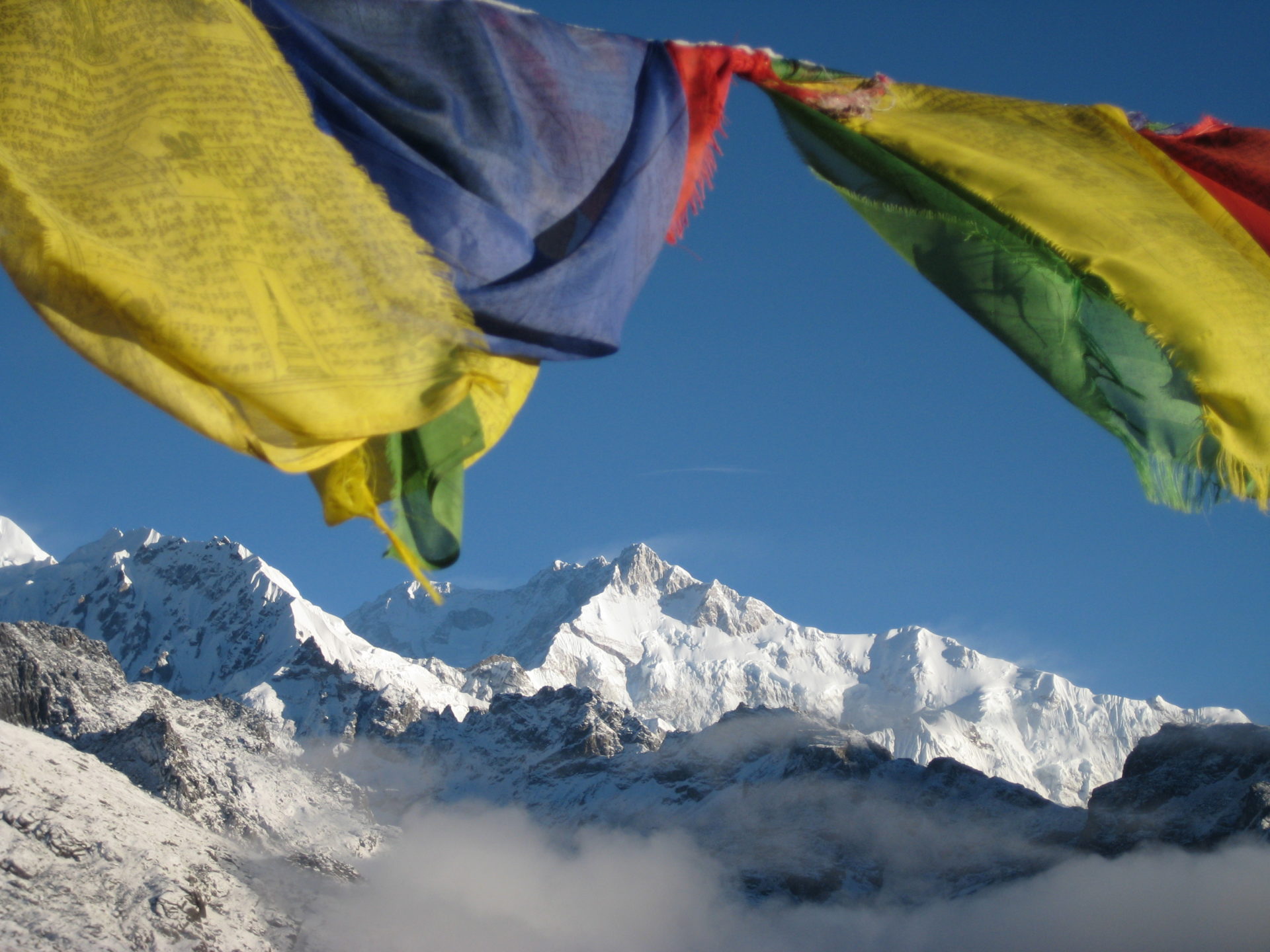
Sikkim
Prices and Dates
The best time to travel is october to December and also March to May, although there may still be plenty of sniffin in spring.
Prices:
from 2 participants 2899 € per person
from 3 participants 2399 € per person
from 4 participants 2199 € per person
from 5-6 participants 1999 € per person
from 7-8 participants 1849 € per person
Tour Info
Requirements
Physical fitness is necessary for the intensive seven-day trek up to 5000 meters to the Goechala Pass.
Information about the Trekking Tours with Chalo! Travels
Mountain guide and trekking team
On all our treks we have at least one (for larger groups of 6 participants two) trained local mountain guide. Our mountain guides have all completed at least the Indian mountaineering training, many of them have also completed the advanced courses.
They are familiar with the trekking routes and know the terrain excellently. All our mountain guides speak English.
In addition, there is a local team consisting of a cook (if the group consists of only two participants, the mountain guide also takes over the tasks of the cook), helpers, horsemen with horses or Nepalese porters, depending on the type of trek.
All our team members have been working with us for years, are very friendly and always strive to provide our guests with a great trekking experience. Their English (besides of the Guide) is rather mediocre or non-existent, but this is not necessarily a hindrance to communicating with them.
Trekking routes
The trekking routes are designed according the skills of our guests and are all feasible for a person with a good fitness level, unless otherwise mentioned. The daily routes are between five and eight hours long (with breaks) and an average increase of around 500-800 metres of altitude is completed.
In between, rivers may have to be crossed. The paths are partly well developed, but sometimes also almost non-existent. On our trekking routes there are hardly any villages in between, so we will take enough food for the whole tour.
On our treks we cross passes, snow or glaciers. On steep slopes, we have safety equipment with us.
Daily routine (Depending on the length and intensity of the trek, the times may vary)
7: 00 am Get up with Tea
7:30-8:30 am Breakfast
7:00-9:30 am Dismantling of the camp
8:00- 9:30 am Start Trek
1:00 pm Lunch on the way
3:00-5:00 pm Arrival at the camp and camp construction
3:30-5:30 pm Snacks
7:00 pm Dinner
Altitude and altitude sickness
Altitude sickness is a very important topic that should not be underestimated, especially during our trekking tours in the Indian Himalayas. At altitudes above 3500 m, our body has to slowly get used to the low air pressure, which also causes less oxygen to enter our lungs. The first signs of altitude sickness are headaches, which are accompanied by dizziness, nausea, insomnia and loss of appetite. It becomes problematic when water accumulates in the lungs and brain and edema occurs. Then only the immediate descent to lower altitudes will help. To prepare for the heights on our treks, we will either spend a few nights at high altitudes before the trek or slowly ascend during the trek to acclimatize. If we notice that there are problems with our guests (each person is otherwise able to acclimatize, regardless of age, gender and fitness level), it may happen that either the entire group or the concerned participant descends/returns with a team. In addition, it makes sense to take an emergency drug for altitude sickness. For this, it is best to consult the pharmacy or the travel doctor. For certain treks we will also have oxygen with us.
Luggage
Each trekking participant is responsible for his own clothes and personal belongings. Depending on the trek, we are either with horses or porters. If we have load horses, one bag per participant can be loaded onto the horse. In the case of treks with porters, all personal luggage must be carried independently. Tents, sleeping bags, mattresses and food are carried by our porters.
For trekking tours with horses, a day backpack with space for the lunchbox, a water bottle and warm overcoat clothing should be taken with you. Here to the complete packing list for our trekking tours.
Packing list for trekking tours
- sleeping bag at least -10°C
- large backpack or soft carrying bag so that the load animals can carry the luggage
- Small carrying backpack for the day approx. 30-40 l with rain protection
- flashlight/headlamp
- 2 refillable water bottles
- hiking poles
- passport and passport copy
- camera with spare battery and memory card
- headgear as sun protection
- Good Sunglasses
- cap
- Scarf, Buff
- Gloves
- wind-proof trekking pants
- trekking pants
- Functional Underwear Long
- hiking boots
- socks thick and thin
- sneakers, sandals and/or slats
- windbreaker
- Warm Jacket
- fleece sweater/jacket
- Tshirts
- sunscreen, lip balm min. Protection 40
- fat cream
- water purification tablets (boiled and filtered water is provided)
- own medications for headaches, nausea, digestive problems, colds)
- bubble patches and dressing material
- own hygiene articles
- Toilets Paper
- hand disinfection
Meals
During the trek there will be a vegetarian full catering. Water is either boiled or we have a water filter with us.
Breakfast (daily selection):
- Coffee/Tea
- Oatmeal porridge/muesli/cornflakes/Indian porridge
- Indian breakfast
- Sliced fruit/vegetables
Lunch (mostly lunchbox), sometimes warm in the camp
- Sandwiches/Indian (rice, chapati, vegetables)/potatoes
- Juices
- Chocolate
- Fruit
Snacks
- Tea/coffee
- Cookies
- French fries/Indian snacks
Soup
Dinner (depending on the length of the Trek mix of Indian/Chinese/Continental)
- Vegetable dish
- Lentil dish
- Rice/noodles
- Chapati
- Salad
- Dessert
Accommodation and camp
We have very comfortable and spacious two-man tents. Our mattresses are practical but simple if there are problems with sleeping on hard surfaces, please take your own mattress with you or order from us. Our sleeping bags are freshly washed and have a very good quality with comfort zone up to -5°C/extreme zone up to -20° C. It is recommended to bring personal indoor sleeping bags.
In addition, we have a spacious dining tent with tables and chairs, a kitchen tent for the team and a toilet tent. For treks up to 4 people, the kitchen tent can also act as a dining tent at the same time.
For trekking tours with porters, we will take our smaller, lighter tents with us and do without a toilet tent.
Weather
In the Himalayas, temperatures fluctuate widely. While it can get warm up to 25°C during the day and the sun is not only warming, but also very intense (sun protection is a must), it can also cool down significantly below the minus-grade at night, especially in the months end of September and October, as well as in June. There may also be weather changes with snow on the passes.
